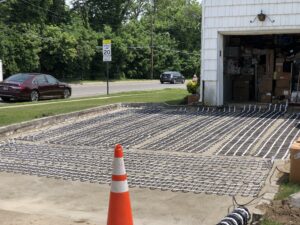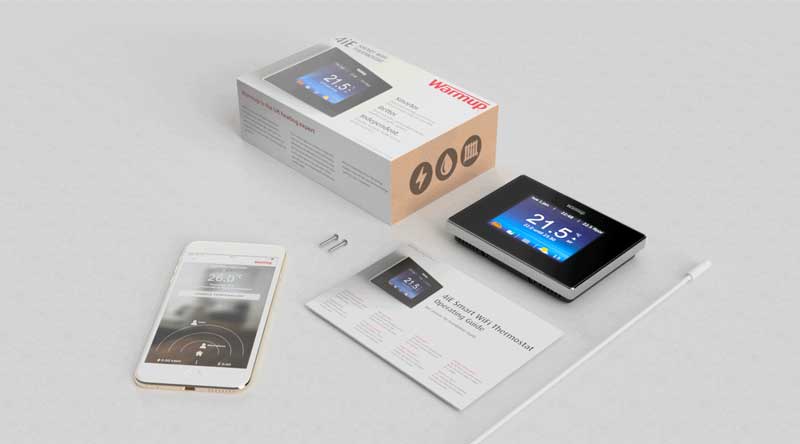Home
/
Installation
/
Snow Melting Mat – WSMM
Basic Installation of Snow Melting Cables & Mats under Asphalt, Concrete or Pavers
Important reminders
- Test the continuity and resistance of the wires before, during and after installation. You will use a digital multi-meter to check the resistance against the measurements provided in the installation manual for both mat and cable products.
- You must never cut the cable.
- Take precautions not to damage the cable during installation.
- Snow/Moisture sensors should always be placed in open areas away from trees or bushes to ensure proper detection of rain/snow and activate the heating system.
- Do not attempt installation if the ambient temperature is below 14°F.
- Never power up the heating system unless it is completely embedded in asphalt, concrete or sand, even for testing purposes and allow for sufficient drying time where applicable. Ignoring this warning will permanently damage the heating cable.
- Detailed installation instructions can be found online at by clicking here.

GENERAL INSTALLATION NOTES
- Ensure the paving contractor has a solid base of 4”-8” (102-203mm) of crushed rock aggregate tamped down and ready to receive the mortar pour. Clean the area below the Snow Melt Mat so that it is free from sharp objects. It is extremely important to keep heavy equipment, machinery, vehicles, sharp shovel and rake edges away from the cable to prevent damage.
- For locations that require handrails, it is strongly recommended that the concrete installer pre-sleeve for the posts to avoid any and all drilling of the concrete. The Snow Melt Mats cable must be routed around these sleeves/posts to avoid any direct contact with them. The Mat cables must NOT pass through expansion joint locations. Avoid saw-cutting or drilling through cables that are no longer visible beneath the concrete by spray painting lines to mark exactly where expansion joints may be located. Place the mat down on top of the tamped aggregate with the mesh facing up. Stake the mesh firmly into the crushed rock so that it remains flat.
- Route the cold lead(s) through rigid PVC or metal conduit(s) to an accessible weatherproof junction box(es). Ensure that none of the heated section enters any conduit. Do not use excess forces to pull the cold leads otherwise it may damage the hot/cold splice. Seal the conduit ends.
- A ground sensor can be place outside the paved area. When placed within the paved area (recommended), ensure proper measuring and securing for the base of the sensor itself as it should be flush with the final coat of concrete. The sensor can be mounted on a wood or concrete block. A separate conduit should be used to protect the low voltage sensor wire and must NOT be shared with any high voltage cold lead from the mat cables.
- Once the conduits & sensor(s) are in place, the mortar can be poured, covering the cables completely without leaving any air pockets, so that the cables are covered by 1.5”(38mm) of mortar but not more than 2”(51mm).
- An electrician MUST complete the final test and record results of all the mat cables readings with a multi-meter and meg-ohmmeter and verify that each mat is in good working order and is ready for energizing once the mortar has cured.


![Thumbnail [200x250]](/wp-content/uploads/Indoor-Systems-Page-Image.png)
![Thumbnail [200x250]](/wp-content/uploads/image-13.png)
![Thumbnail [200x250]](/wp-content/uploads/Projects-Image.png)